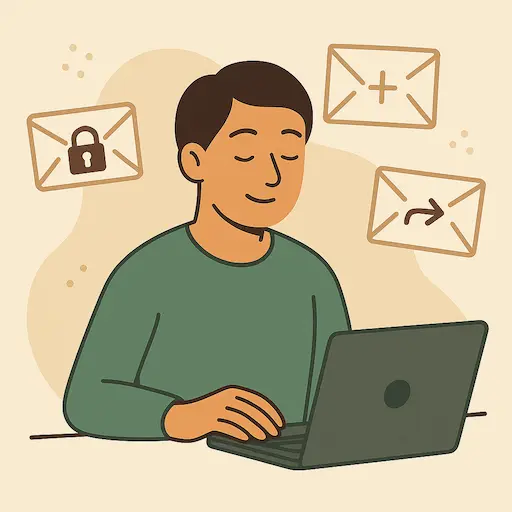Email Aliases 101
How to Use Smarter Email Addresses to Stay Safer Online

Use aliases to categorise and pigeonhole your email.
Ever feel like signing up for “just one more thing” online will turn your inbox into a spam jungle?
Or wonder who leaked your email address when weird messages start showing up?
You’re not alone — and you’re not powerless.
This guide will show you how to use email aliases to take back control. It’s simple, effective, and doesn’t require changing how you use email day to day.
What’s an email alias?
An alias is a different address that forwards to your real inbox — like a mask for your email. You can create a new one for each website, app, or newsletter. That way, if one gets spammed (or sold), you know exactly where it came from — and you can turn it off without affecting anything else.
Option 1: Use an alias service (best for privacy)
Services like:
How it works:
You create a unique address like shop@youralias.com, and it forwards to your main inbox.
You can reply from it, block it, or disable it anytime — without revealing your real address.
Best for:
- Sites you don’t fully trust
- One-time signups
- Preventing spam
- Separating different areas of your life (e.g. shopping, school, memberships)
Heads-up:
Some websites don’t accept alias domains (e.g. simplelogin.com) and may block them as “temporary” or “unusual” addresses. When that happens, move to Option 2.
Option 2: Use a second Gmail account with “+aliases”
If you already use Gmail, you don’t need a special service to create basic aliases.
Try this:
If your email is jane.doe@gmail.com, you can sign up to a site using:
jane.doe+shopping@gmail.comjane.doe+schoolnews@gmail.comjane.doe+may2024signup@gmail.com
These all land in your regular inbox — but you can:
- Filter by alias
- Spot where spam came from
- Delete or block just that variation
Bonus:
You can also create a whole separate Gmail account to use as your “burner” email — for accounts you don’t want tied to your main identity.
Quick Tips for Smarter Email Use
✅ Use a unique alias for each new site or service
✅ Create a rule/filter to sort or label emails by alias
✅ Don’t reuse the same alias on multiple sites — that defeats the point
✅ Use your main email only for trusted, important services (banking, family, etc.)
✅ If an alias gets spammed or leaked, just turn it off or block it
Final Thought: Little trick, big control
Email aliases are a small change with a big payoff: fewer spam headaches, better privacy, and more control over your digital life.
You don’t have to switch email providers or learn anything fancy — just start where you are, with what you’ve got.
If you found this helpful, check out our 7-Day Privacy Bootcamp — practical, friendly emails that help you build better digital habits, one day at a time.